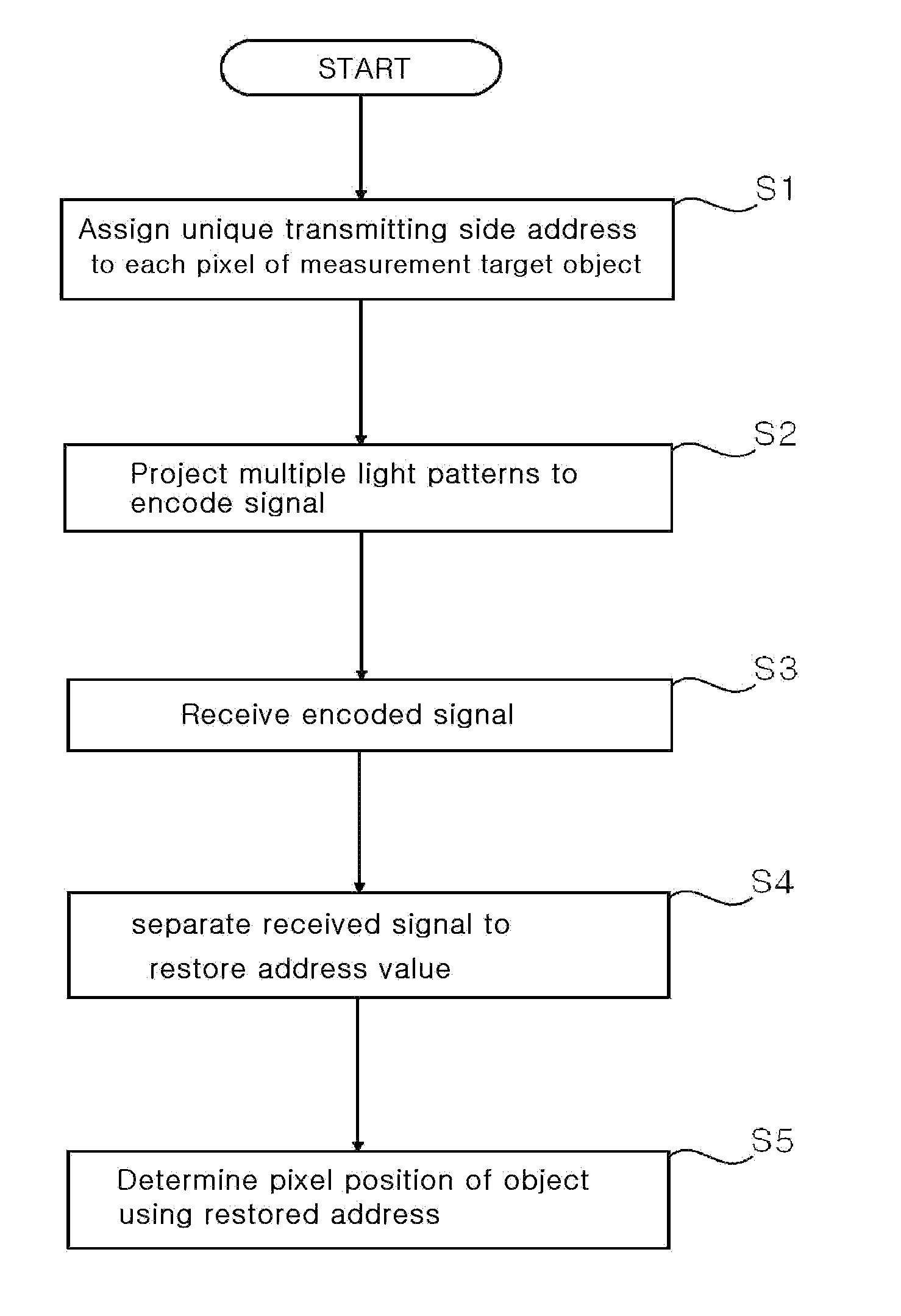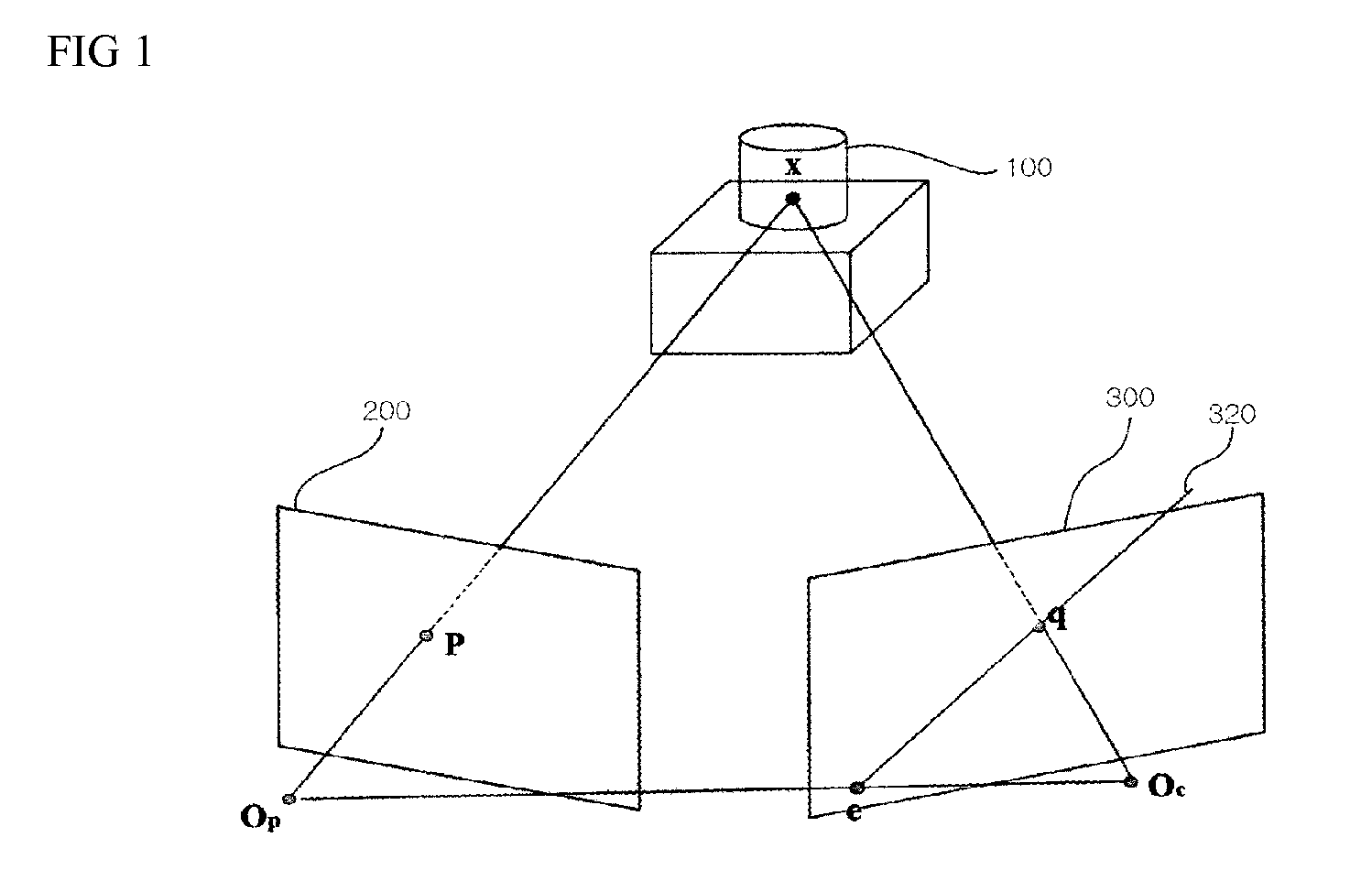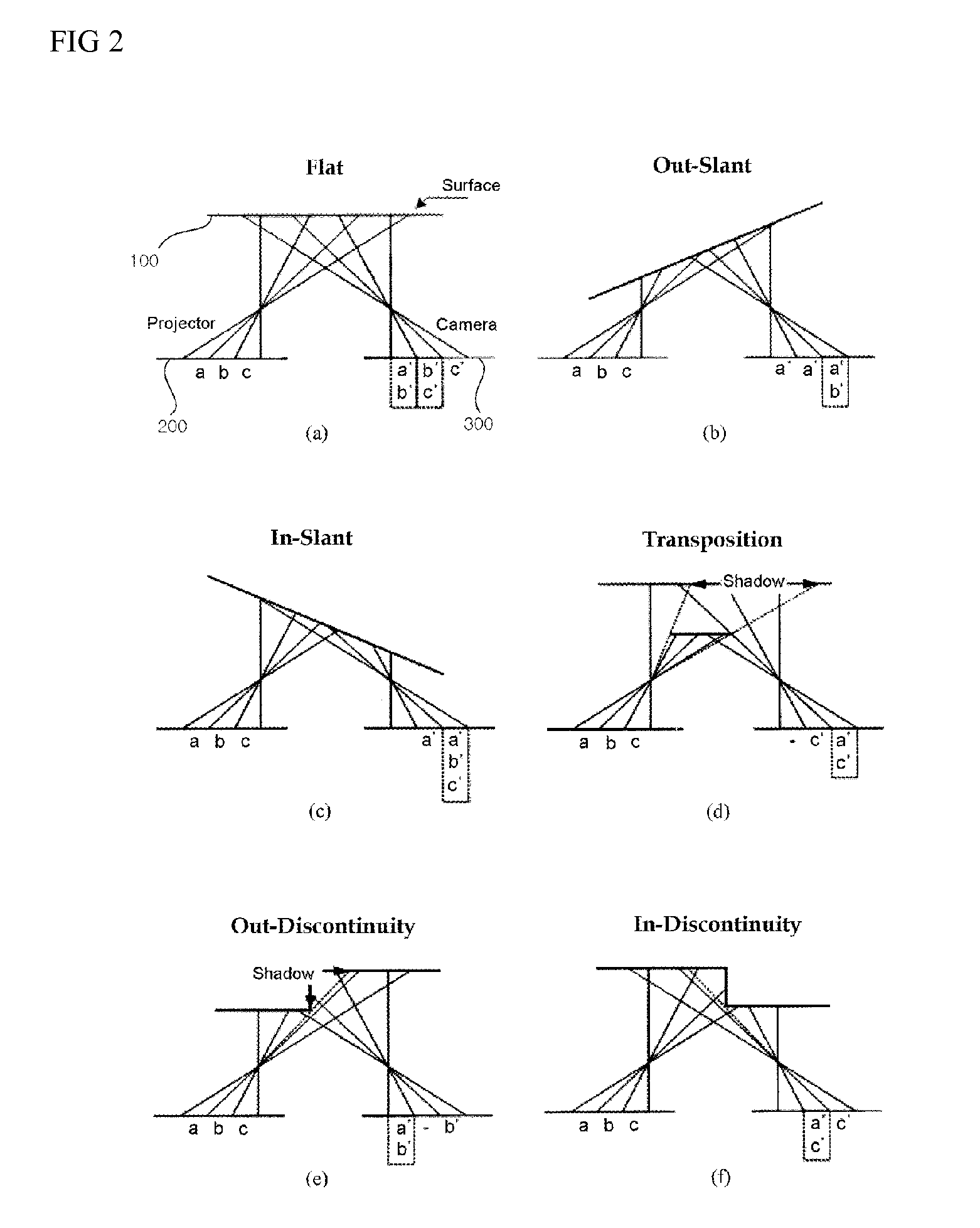Method and system of structural light-based 3D depth imaging using signal separation coding and error correction thereof
a signal separation and depth imaging technology, applied in the field of 3d depth imaging method and system, can solve the problems of poor accuracy and robustness of the method, inability to rapidly change the scene, and affect the spatial coding by signal modification or complexity
- Summary
- Abstract
- Description
- Claims
- Application Information
AI Technical Summary
Benefits of technology
Problems solved by technology
Method used
Image
Examples
first embodiment
[0054]FIG. 3 is a flowchart illustrating a 3D imaging method using signal separation according to an embodiment of the present invention.
[0055] As shown in FIG. 3, a unique transmitting side address is assigned to a signal corresponding to each pixel of a measurement target object, in step S1. In step S2, multiple light patterns are projected by the projection means to encode a signal including the transmitting side address. Each pattern is received in step S3. In step S4, an original signal is separated through a signal separation process. A correspondence point is calculated from the restored signal in step S5.
[0056] The steps are performed by a processing means that processes collected data. That is, the processing means used in the present invention is a processor that can perform steps S1 to S5. The processing means is typically implemented by a computer system.
[0057] An example of the signal encoding and decoding processes and the error detection and correction used in the ...
second embodiment
[0090] The signal separation coding scheme according to the first embodiment is to estimate signal mixture between the projector pixel and the camera pixel in order to determine the pixel correspondence. In the mixed-signal separation process, a result of projecting the received signal to a hierarchical orthogonal signal group is represented in a projector-camera signal space. 3D depth image calculation is a process of determining a projector side signal corresponding to each pixel of the camera in the projector-camera signal space.
[0091] The second embodiment suggests (1) a scheme for creating an image at a time point of a projector without explicit 3D restoration, (2) a new method for restoring 3D by simultaneously calculating a pixel-by-pixel correspondence between the created stereo image and the structural light, using Hermann von Helmholtz's complementarity principle that light from one light source reflected on an object surface can be equally interpreted as light from a rec...
PUM
 Login to View More
Login to View More Abstract
Description
Claims
Application Information
 Login to View More
Login to View More - R&D
- Intellectual Property
- Life Sciences
- Materials
- Tech Scout
- Unparalleled Data Quality
- Higher Quality Content
- 60% Fewer Hallucinations
Browse by: Latest US Patents, China's latest patents, Technical Efficacy Thesaurus, Application Domain, Technology Topic, Popular Technical Reports.
© 2025 PatSnap. All rights reserved.Legal|Privacy policy|Modern Slavery Act Transparency Statement|Sitemap|About US| Contact US: help@patsnap.com



